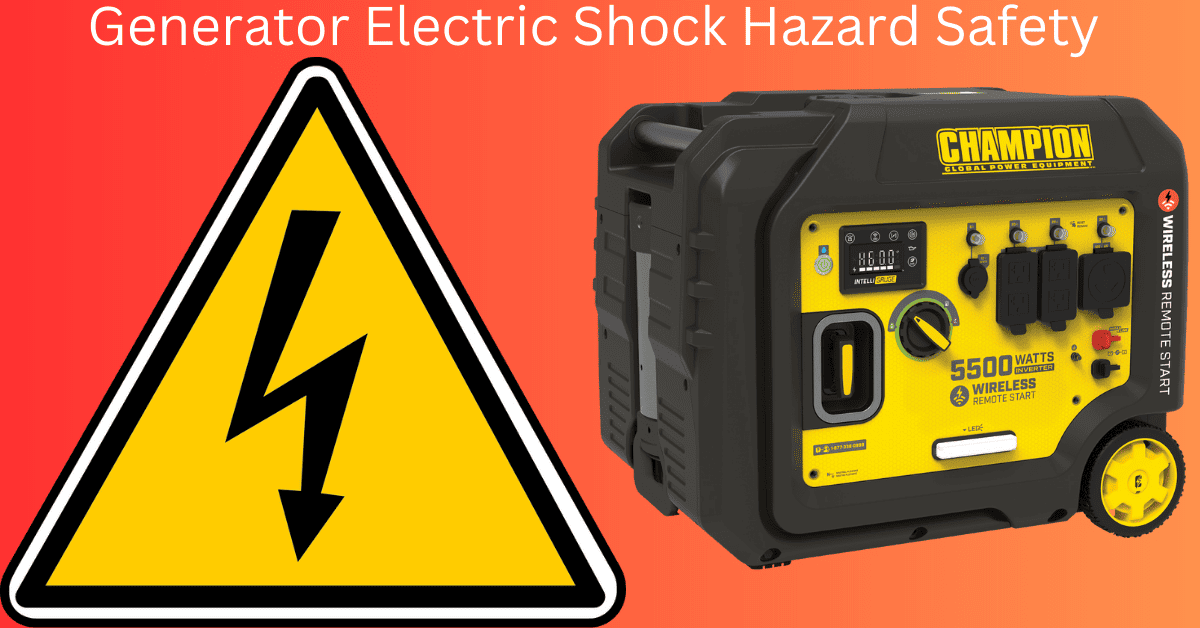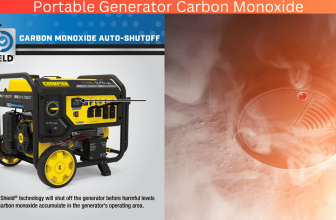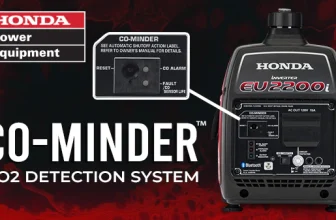
We all know how much we rely on electricity in our daily lives. From charging our phones to powering our homes, it’s easy to take it for granted until it’s gone. And when power outages occur, many turn to portable generators to keep their essential appliances running.
However, with great power comes great responsibility, and it’s important to understand the risks associated with these devices. Ironically, while portable generators offer a sense of security during an outage, they can also pose a serious safety hazard if not used properly.
As someone who craves a sense of mastery over my own safety and the safety of my loved ones, I wanted to learn more about power protection and electrical safety with portable generators. In this article, we’ll explore the steps you can take to ensure that you’re using your portable generator safely and effectively, from choosing the right generator to connecting it to your home’s electrical system.
So let’s dive in and become masters of our own power protection!
Key Takeaways
- Choosing the right generator based on wattage, fuel type, and run time is crucial for electrical safety.
- Proper placement of the generator, at least 20 feet away from structures and in a well-ventilated area, can prevent carbon monoxide poisoning.
- Regular maintenance and inspections, including checking for signs of damage or wear and tear, can extend the life of the generator and ensure it’s working properly.
- Emergency preparedness, including having a plan with family members, necessary supplies, and a backup fuel supply, can help navigate unexpected situations with confidence.

Understand the Risks Associated with Portable Generators
Don’t underestimate the dangers of portable generators – they can pose serious risks to your safety if not handled properly. These generators are commonly used during power outages and outdoor activities, but they can also be deadly if not used correctly.
The most significant danger is carbon monoxide poisoning, which can occur when generators are used in enclosed spaces without proper ventilation. Additionally, portable generators can cause electrical shock or electrocution if they are not properly grounded or if they come into contact with water.
It’s essential to read the manufacturer’s instructions and warnings before using a generator and to use it only in well-ventilated areas. It’s also important to keep the generator dry, as water can cause electrical shock.
Understanding the risks associated with portable generators is critical to your safety. Carbon monoxide poisoning and electrical shock are serious hazards that can be avoided with proper use and precautions.
As you consider purchasing a generator, keep these risks in mind and choose a model that is safe for your intended use.
Choose the Right Generator
When selecting a generator, it’s important to pick the one that best suits your needs and can keep your home running smoothly during a power outage. There are many different types of generators available, so it’s important to take the time to research and compare them before making a decision.
Consider factors such as wattage, fuel type, and run time to determine the right generator for you. One important factor to consider when choosing a generator is wattage. Make a list of the appliances and electronics you will need to run during a power outage and add up their wattage requirements. This will give you an idea of how much power you will need from your generator. Additionally, consider the fuel type that the generator uses and how long it can run on a single tank of fuel. This will help you determine how much fuel you will need to keep on hand during an extended power outage.
Choosing the right generator is crucial for ensuring that your home stays powered during an outage. However, it’s not the only thing you need to consider. Proper placement of the generator is also important for both safety and efficiency.
In the next section, we’ll discuss the best practices for placing your generator to ensure that it operates safely and effectively.
Proper Placement of the Generator
To ensure that your generator operates efficiently, it’s important to find a suitable place where it can be stationed to avoid causing any obstructions or interference, as well as to keep it out of harm’s way. When choosing a location for your generator, consider the following factors:
| Factor | Consideration |
|---|---|
| Distance | Keep the generator at least 20 feet away from your home or any other structure to prevent carbon monoxide poisoning. |
| Ventilation | Make sure the generator is placed in a well-ventilated area to avoid the buildup of toxic fumes. |
| Terrain | The generator should be placed on level ground to prevent it from tipping over. |
| Weather | The generator should be protected from rain, snow, and other harsh weather conditions. |
| Accessibility | Make sure the generator is easily accessible for maintenance and refueling. |
By keeping these factors in mind, you can ensure that your generator is placed in a safe and efficient location. Remember to always follow the manufacturer’s instructions for proper placement, and to never operate the generator indoors or in an enclosed space.
Now that you’ve found a suitable location for your generator, it’s time to ground it properly. Grounding your generator is essential for electrical safety, as it helps to prevent electrocution and electrical fires. By grounding your generator, you provide a path for electrical current to flow safely to the ground, reducing the risk of electric shock or fire. So let’s move on to the next step and learn how to properly ground your generator.
Grounding Your Generator
When grounding your generator, it’s important to use a grounding rod that is specifically designed for the purpose. Additionally, it’s crucial that we follow the manufacturer’s instructions for proper grounding to ensure that we are doing it correctly.
Proper grounding is essential because it helps prevent electrical shock and damage to both the generator and the devices it powers.
Use a Grounding Rod
Using a grounding rod is essential for ensuring electrical safety with portable generators. When you use a generator, it’s important to remember that it creates electricity through a process of electromagnetic induction. This means that the generator produces a current that flows through its metal frame and into the ground. If the generator is not properly grounded, this current can potentially flow through any nearby objects, including people, and cause serious harm.
To prevent this from happening, you should always use a grounding rod when you set up your portable generator. A grounding rod is a long metal rod that you drive into the ground near your generator. You then attach a grounding wire from the generator to the rod, which allows any excess electrical current to flow harmlessly into the earth. This helps to prevent electrocution and protects your generator and other electrical equipment from damage.
To emphasize the importance of using a grounding rod, here’s a table that compares the effects of using a grounding rod versus not using one:
| Using a Grounding Rod | Not Using a Grounding Rod | |
|---|---|---|
| Safety | Prevents electrocution and injury | Increases risk of electrocution and injury |
| Equipment | Protects generator and other equipment from damage | Increases risk of damage to generator and other equipment |
Remember, using a grounding rod is an essential step in ensuring electrical safety with your portable generator. However, it’s not the only step you should take. In the next section, we’ll discuss the importance of following the manufacturer’s instructions for your generator.
Follow Manufacturer’s Instructions
It’s crucial that you heed the manufacturer’s instructions for your generator, as failing to do so could result in a costly mistake that leaves you in a bind. Manufacturers provide these instructions for a reason – they know their product best and have tested it thoroughly to ensure that it functions safely and efficiently. Ignoring or disregarding these instructions can lead to damage to your generator, cause it to malfunction, or even create a safety hazard.
Make sure to read the manual that comes with your generator carefully and follow all the instructions provided. This includes information on how to start and stop the generator, how to connect it to your appliances, and how to maintain it properly. Doing so will not only ensure that your generator lasts longer and operates safely, but it will also give you peace of mind knowing that you’re using it correctly.
Now, let’s move on to connecting your generator to your home’s electrical system and ensuring proper power protection.
Connecting Your Generator to Your Home’s Electrical System
Connecting a generator to your home’s electrical system requires proper installation and safety measures. It’s important to follow the manufacturer’s instructions and consult with a licensed electrician to ensure that the generator is properly connected to your home’s electrical system.
Here are some key points to keep in mind when connecting your generator to your home:
- Determine your power needs: Before connecting your generator, it’s important to determine your power needs. You should prioritize the essential appliances and devices that you need to power in case of an outage. This will help you select a generator that’s appropriately sized for your needs.
- Use a transfer switch: A transfer switch is a device that allows you to safely connect your generator to your home’s electrical system. It transfers power from the generator to your home’s circuits and prevents backfeeding, which can be dangerous for utility workers. Make sure to have a licensed electrician install a transfer switch for you.
- Test your system: Once your generator is connected to your home’s electrical system, it’s important to test it regularly. This will help you ensure that your system is working properly and that you’re prepared for an outage. You should test your system at least once a month and after any significant changes to your home’s electrical system.
By following these key points, you can ensure that your generator is properly connected to your home’s electrical system and that you’re prepared for an outage. However, it’s also important to regularly maintain and inspect your generator to ensure that it’s working properly.
Regular Maintenance and Inspections
To keep your backup system running smoothly, regular upkeep and check-ups are essential. Before every use, check your generator for any signs of damage or wear and tear. Look for loose parts, frayed wires, and other signs of disrepair.
It’s also important to keep a regular maintenance schedule, including oil changes and filter replacements. By keeping your generator in good condition, you can ensure that it’s always ready when you need it.
In addition to regular maintenance, it’s important to inspect your generator after every use. This includes checking for any signs of overheating or other issues that may have arisen during operation. If you notice any problems, address them immediately to avoid further damage or potential safety hazards.
By taking a proactive approach to maintenance and inspections, you can extend the life of your generator and avoid costly repairs down the line. When it comes to power protection, proactive measures are key. However, even the most well-maintained generator can’t always prevent emergencies. In the next section, we’ll discuss how to prepare for unexpected power outages and other emergency situations.
Emergency Preparedness
You need to be prepared for unexpected emergency situations by having a plan in place and necessary supplies on hand. This is especially important when it comes to power outages caused by natural disasters or other events.
Portable generators can be a lifesaver in these situations, but they also require proper preparation and use to ensure safety. To be prepared for emergencies involving power outages, consider the following:
- Create a plan with your family or household members to ensure everyone knows what to do in case of an emergency.
- Keep a stock of necessary supplies, including food, water, first aid kits, and flashlights, in a designated location that is easily accessible.
- Purchase a portable generator and learn how to safely operate it before an emergency occurs.
- Have a backup fuel supply on hand for your generator, such as extra gasoline or propane.
By following these steps, you can be prepared for unexpected emergencies and ensure the safety of yourself and your loved ones during power outages.
Remember to always prioritize safety when using a portable generator, and never operate it indoors or in enclosed spaces. With the right preparation and knowledge, you can confidently navigate emergency situations and maintain power protection for your home.
Frequently Asked Questions
Can a portable generator be used indoors?
No, portable generators should not be used indoors because they emit carbon monoxide, which is a deadly gas that cannot be seen or smelled. It’s important to always use generators in a well-ventilated area to ensure safety.
How long can a portable generator run continuously?
A portable generator can run continuously for varying lengths of time depending on its fuel capacity and load. To ensure optimal performance and safety, it’s important to follow manufacturer recommendations and conduct regular maintenance.
What kind of extension cords should be used with a portable generator?
For safety and optimal performance, we use heavy duty, outdoor rated, grounded extension cords that can handle the wattage and length we need. It’s important to match the cord’s capacity to the generator’s output.
How do I safely store fuel for my generator?
To safely store fuel for our generator, we use a red gas can made of sturdy plastic with a tight-fitting cap. We keep it in a dry, cool, and well-ventilated area away from any potential sources of ignition.
Is it safe to power sensitive electronics with a portable generator?
Yes, it’s safe to power sensitive electronics with a portable generator, as long as you use a surge protector and voltage regulator. We’ve had success powering our laptops and phones during power outages.
Conclusion
In conclusion, power protection is paramount when it comes to electrical safety with portable generators. It’s crucial to understand the risks associated with these machines and choose the right generator for your needs. Proper placement and grounding are also essential to prevent accidents and ensure the safety of everyone around.
Regular maintenance and inspections are also critical to keep your generator in top condition and avoid any potential hazards. And finally, emergency preparedness is key to ensure that you and your loved ones will be safe in case of a power outage.
Remember, with proper power protection, you can enjoy the convenience and benefits of a portable generator without compromising safety. Stay safe, stay protected, and secure your power supply today!





